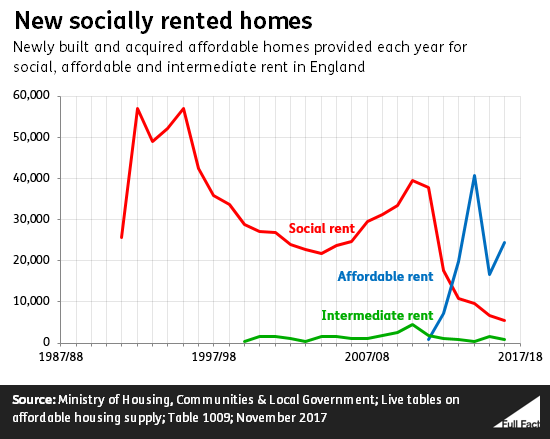“I think it’s important to note that we’ve stripped away over the past 30 years so much social housing, which has now been placed into the private rental market.”
BBC Question Time audience member, 8 March 2018
The size of the social housing sector has been decreasing over time.
The proportion of the population living in social housing in Great Britain halved between the early 1980s and early 2010s, according to the Institute for Fiscal Studies. The IFS puts this down to two key developments: the introduction of Right to Buy in 1980, which gave tenants the ability to buy their council houses at below market rates, and a general drop in the amount of social housing being built.
The number of homes for rent from councils or housing associations in the UK has been decreasing from a peak of around seven million in the early 1980s to just under five million in 2014.
In contrast the number of homes available for private rental has increased from around two million to over five million.

Social housing usually refers to homes rented at sub-market levels by councils and housing associations. “Social rent” levels are around 50% of market levels. The government also includes “affordable rent” homes in its definition of social housing, these are up to 80% of market levels.
There were around 5,000 homes for social rent built or acquired in England in 2016/17 compared to 24,000 for affordable rent.
Affordable rent properties were first introduced in 2011 and since then their number has increased significantly while the number of social rent properties has decreased.
We’ve written more about how affordable housing is, and house building in England more generally elsewhere.

